JAJSML7B March 2013 – August 2021 TPS53511
PRODUCTION DATA
- 1 特長
- 2 アプリケーション
- 3 概要
- 4 Revision History
- 5 Pin Configuration and Functions
- 6 Specifications
- 7 Detailed Description
- 8 Application and Implementation
- 9 Power Supply Recommendations
- 10Layout
- 11Device and Documentation Support
- 12Mechanical, Packaging, and Orderable Information
パッケージ・オプション
メカニカル・データ(パッケージ|ピン)
- RGT|16
サーマルパッド・メカニカル・データ
- RGT|16
発注情報
6.6 Typical Characteristics
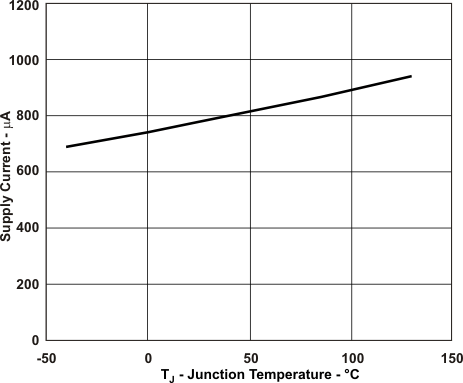 Figure 6-1 VCC Supply
Current vs. Junction Temperature
Figure 6-1 VCC Supply
Current vs. Junction Temperature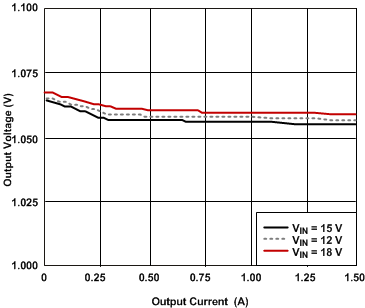 Figure 6-3 1.05-V Output Voltage vs. Output Current
Figure 6-3 1.05-V Output Voltage vs. Output Current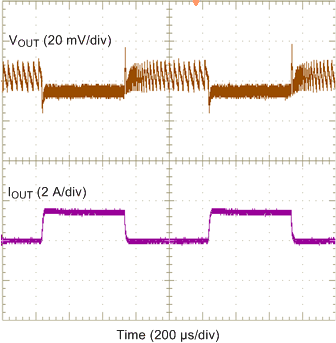 Figure 6-5 Load Transient Response,
1.05 V, 0 A to 1.5 A
Figure 6-5 Load Transient Response,
1.05 V, 0 A to 1.5 A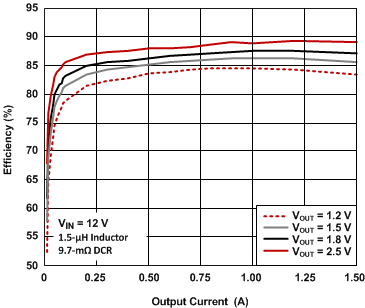 Figure 6-7 Efficiency vs. Output Current
Figure 6-7 Efficiency vs. Output Current Figure 6-9 Switching Frequency vs Input Voltage
Figure 6-9 Switching Frequency vs Input Voltage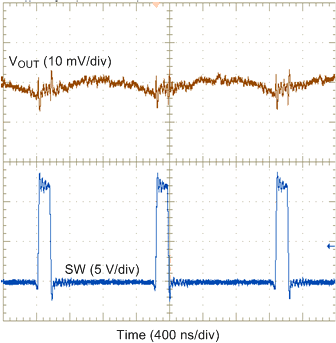 Figure 6-11 Output Voltage Ripple
Figure 6-11 Output Voltage Ripple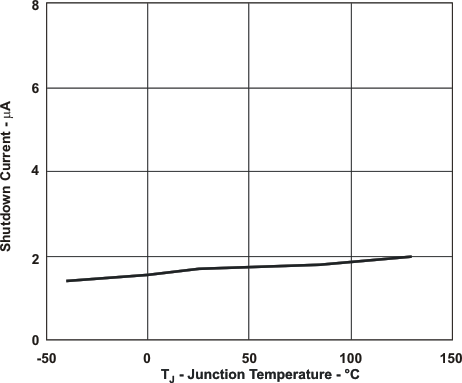 Figure 6-2 VCC Shutdown
Current vs. Junction Temperature
Figure 6-2 VCC Shutdown
Current vs. Junction Temperature Figure 6-4 1.05-V Output Voltage vs. Input Voltage
Figure 6-4 1.05-V Output Voltage vs. Input Voltage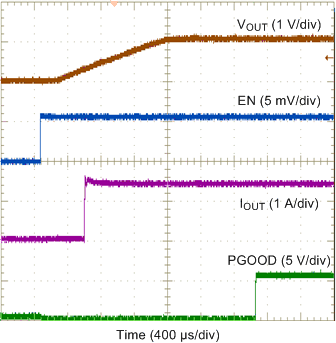 Figure 6-6 Start-Up
Figure 6-6 Start-Up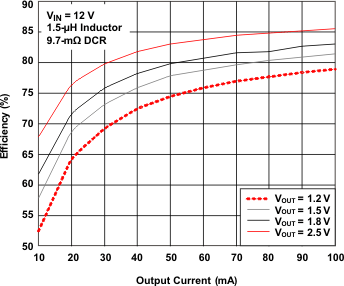 Figure 6-8 Light Load Efficiency vs. Output Current
Figure 6-8 Light Load Efficiency vs. Output Current Figure 6-10 Switching Frequency vs Output Current
Figure 6-10 Switching Frequency vs Output Current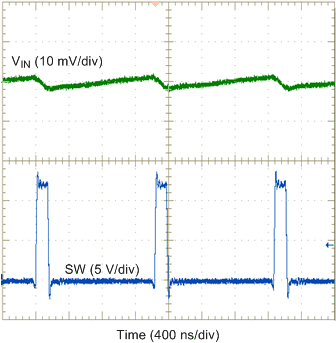 Figure 6-12 Input Voltage Ripple
Figure 6-12 Input Voltage Ripple